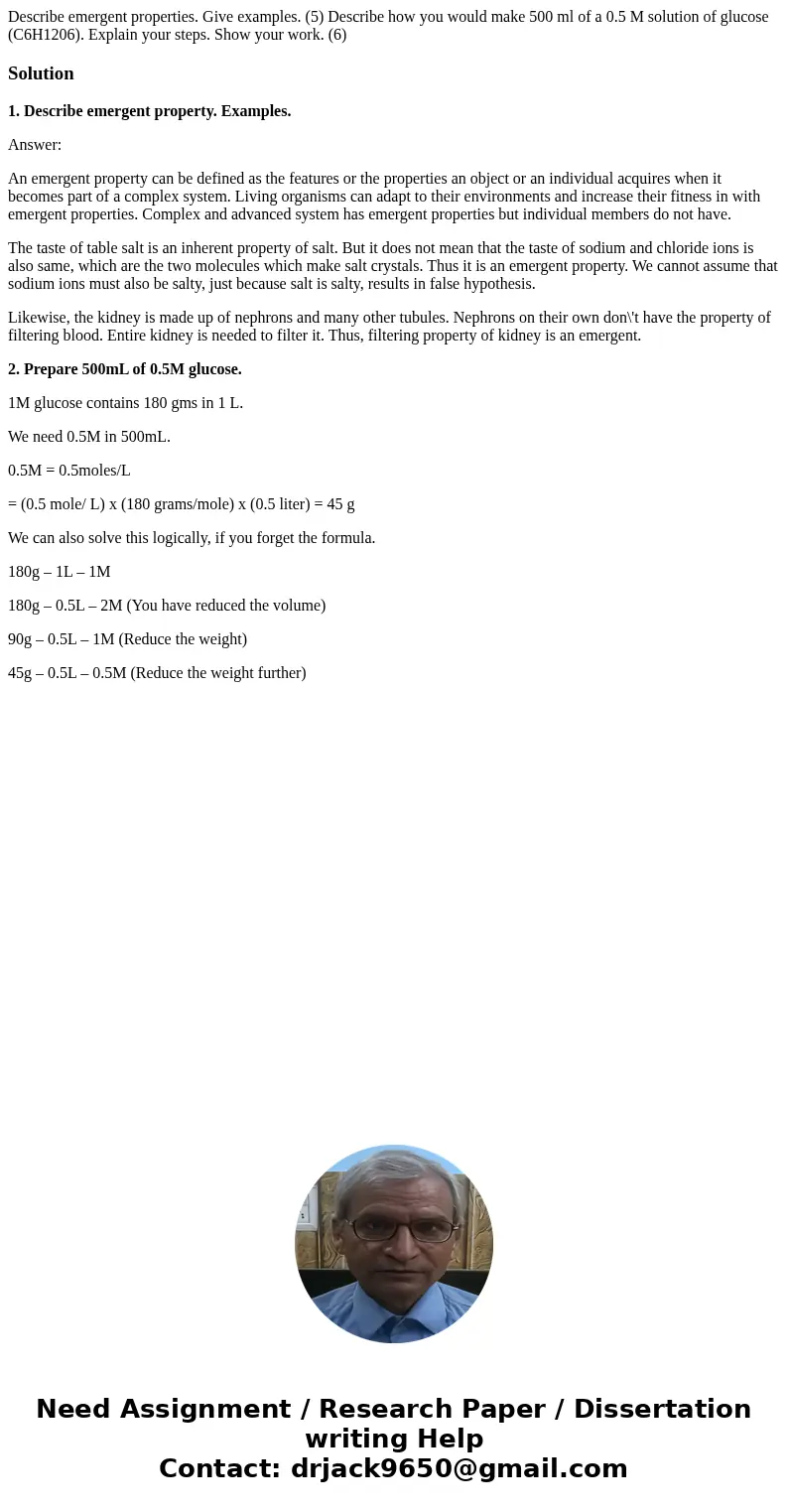Describe emergent properties Give examples 5 Describe how yo
Solution
1. Describe emergent property. Examples.
Answer:
An emergent property can be defined as the features or the properties an object or an individual acquires when it becomes part of a complex system. Living organisms can adapt to their environments and increase their fitness in with emergent properties. Complex and advanced system has emergent properties but individual members do not have.
The taste of table salt is an inherent property of salt. But it does not mean that the taste of sodium and chloride ions is also same, which are the two molecules which make salt crystals. Thus it is an emergent property. We cannot assume that sodium ions must also be salty, just because salt is salty, results in false hypothesis.
Likewise, the kidney is made up of nephrons and many other tubules. Nephrons on their own don\'t have the property of filtering blood. Entire kidney is needed to filter it. Thus, filtering property of kidney is an emergent.
2. Prepare 500mL of 0.5M glucose.
1M glucose contains 180 gms in 1 L.
We need 0.5M in 500mL.
0.5M = 0.5moles/L
= (0.5 mole/ L) x (180 grams/mole) x (0.5 liter) = 45 g
We can also solve this logically, if you forget the formula.
180g – 1L – 1M
180g – 0.5L – 2M (You have reduced the volume)
90g – 0.5L – 1M (Reduce the weight)
45g – 0.5L – 0.5M (Reduce the weight further)

 Homework Sourse
Homework Sourse